What Is The Par Of A Golf Course
What Is the Par of a Golf Course? In golf, par is the number of shots a good golfer is expected to take to finish a hole or the whole course.
It’s like a score goal. Most golf courses have 18 holes, and the total par is usually 72. That means a skilled player should finish the course in 72 strokes.
Each hole has its own par based on its length and difficulty:
- A par 3 is short — one big shot and two putts
- A par 4 is medium — two big shots and two putts
- A par 5 is long — three shots and two putts
Par helps golfers know if they’re doing better or worse. If you score less than par, that’s called a birdie or eagle. If you take more shots, it’s called a bogey or double bogey.
Course designers use par to set up holes based on things like distance, bunkers, water, hills, and green size.
Par makes it easier for players to track progress and compare scores on different golf courses.
Standard Golf Course Par Breakdown by Hole (Real Example)
| Hole Number | Hole Length (Yards) | Par | Hole Type | Notes |
| 1 | 445 | 4 | Long Par 4 | Dogleg left, slight elevation |
| 2 | 575 | 5 | Par 5 | Reachable in 2 by pros |
| 3 | 350 | 4 | Short Par 4 | Requires precision, not power |
| 4 | 240 | 3 | Long Par 3 | Plays longer into the wind |
| 5 | 495 | 4 | Championship Par 4 | One of the toughest holes |
| 6 | 180 | 3 | Mid-range Par 3 | Sloped green |
| 7 | 450 | 4 | Par 4 | Tree-lined fairway |
| 8 | 570 | 5 | Par 5 | Big hitters may eagle |
| 9 | 460 | 4 | Par 4 | Narrow approach |
| 10 | 495 | 4 | Downhill Par 4 | Signature curve |
| 11 | 505 | 4 | Par 4 | Water hazard on the left |
| 12 | 155 | 3 | Iconic Par 3 | Short but risky over the creek |
| 13 | 510 | 5 | Dogleg Par 5 | Strategic layup or go for it |
| 14 | 440 | 4 | Par 4 | Straight fairway |
| 15 | 530 | 5 | Par 5 | Water hazard near the green |
| 16 | 170 | 3 | Par 3 | Sloped green, back pin is tough |
| 17 | 440 | 4 | Par 4 | Narrow tee shot |
| 18 | 465 | 4 | Closing Par 4 | Uphill, demanding approach |
| Total | 7,525 | 72 | — | PGA standard layout |
Note: This table shows a realistic layout of a par 72 golf course, similar to top venues like Augusta National or TPC Sawgrass.
How I Learned What Par Means on a Golf Course (From a Pro Golfer’s View)

When I first started playing seriously, I didn’t really understand how important par was. I just thought it was a number. But after years of competing,
I’ve learned that par is more than a score; it’s how you read the course.
Par helps you build a game plan, especially on championship-level courses like Augusta or Pebble Beach.
You learn to play the course, not just the ball. Knowing if a hole is long, uphill, has water, or sand traps, all of that goes into why it’s a par 3, 4, or 5.
What Does Par Mean in Golf and Where Did It Come From
As a golf pro, I’ve heard this question a hundred times on the driving range: “What does par mean, really?”
Well, in simple words, par is the number of strokes a good golfer should need to finish a hole or a full round.
It’s the score you aim for. So if a hole is a par 4, the course expects you to take four shots, maybe two full swings and two putts.
But did you know the word “par” actually started in the stock market? It meant “equal value.”
In golf, it became a benchmark score in the early 1900s, the expected performance for skilled players. Today, par is used worldwide by the USGA, R&A, and PGA Tour to measure fair scoring.
When I play, I don’t just look at distance. I look at the hazards, wind, and slope, and that’s what helps determine if it’s a par 3, par 4, or par 5.
So remember: par is more than a number, it’s the standard that helps every golfer know where they stand.
Why Do Golf Courses Have a Par Score for Each Hole
A lot of junior players ask me, “Why do courses even use par?”
Here’s why: Par makes golf fair, strategic, and comparable. Every golf course is different; some are short and flat, others are long with hills, bunkers, and water.
By giving each hole a par score, course designers make sure players of all levels know what to expect.
Let me give you an example. A short hole with no hazards might be a par 3. A long hole with water and a narrow fairway? That’s likely a par 5. Designers use yardage, terrain, wind, and green speed to set the par.
As a pro, I rely on par every round. It helps me:
- Build a strategy for each hole
- Track my performance (under, over, or even par)
- Compare my scores on different courses
Without par, golf would feel like guessing. With par, it becomes a challenge, and that’s what makes the game so fun.
How Par Is Determined for a Golf Course
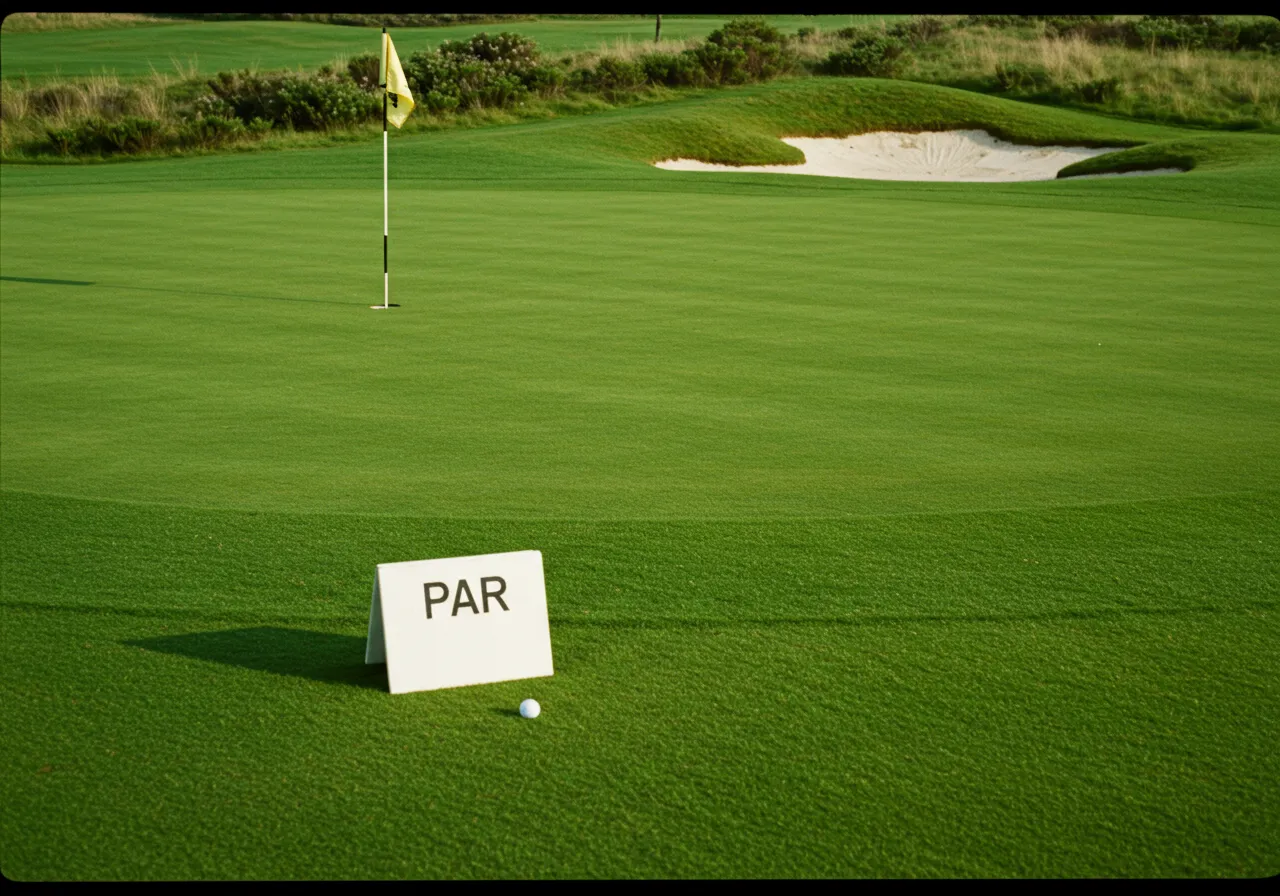
How Do Golf Courses Decide the Par for Each Hole
As someone who’s played on hundreds of courses, I can tell you, par isn’t chosen randomly. It’s based on real numbers and golf science.
The USGA (United States Golf Association) sets the guidelines for deciding par. And the first thing they look at is the hole length:
| Par Type | Men’s Distance | Women’s Distance |
| Par 3 | Up to 250 yards | Up to 210 yards |
| Par 4 | 251–470 yards | 211–400 yards |
| Par 5 | 471–690 yards | 401–575 yards |
| Par 6 (rare) | 691+ yards | 576+ yards |
So when I play a 480-yard hole, I already know it’s likely a par 5. But that’s just the start.
They also check for difficulty:
- Elevation changes (uphill or downhill shots)
- Hazards like water, sand, and trees
- Green complexity (fast, sloped, or small greens)
Sometimes a hole is short but super tricky, that still might stay a par 3. Other times, a long hole plays easier and stays a par 4.
Golf architects and USGA officials use all these details to keep the game fair and challenging. So next time you’re on a tee box, remember: that par number is earned, not guessed.
Who Actually Decides What the Par Is on a Golf Course

You might think it’s just the course owner, but deciding par takes a team.
Most of the time, it’s golf course architects who design each hole and suggest the par. But before it becomes official, the USGA or R&A steps in to approve it.
They review the course using their rating system, which looks at things like:
- Distance and layout
- Scoring difficulty
- Course setup for pros and amateurs
As a pro, I’ve even played practice rounds where the par was adjusted before a big tournament.
One year, a par 5 was shortened and became a long par 4, just to make the scoring tougher.
So while you might see Par 72 printed on a scorecard, there’s a lot of expert thinking behind those numbers.
Bonus: Additional Factors That Affect Par (Besides Distance)
| Design Factor | How It Affects the Par Decision |
| Elevation | Uphill makes holes play longer; downhill can shorten the feel |
| Water Hazards | Increase difficulty; may influence a shorter hole to keep it fair |
| Bunkers and Trees | Force layups or tough angles, changing how a hole is scored |
| Green Complexity | Fast, sloped, or small greens increase challenge, even on short holes |
| Wind & Altitude | High elevation makes the ball fly farther, and may adjust the perceived length |
Note: This table follows USGA’s official par guidelines, showing how hole distance is the starting point, but elevation, hazards, and green design also play a major role.
Par Standards for Different Golf Courses
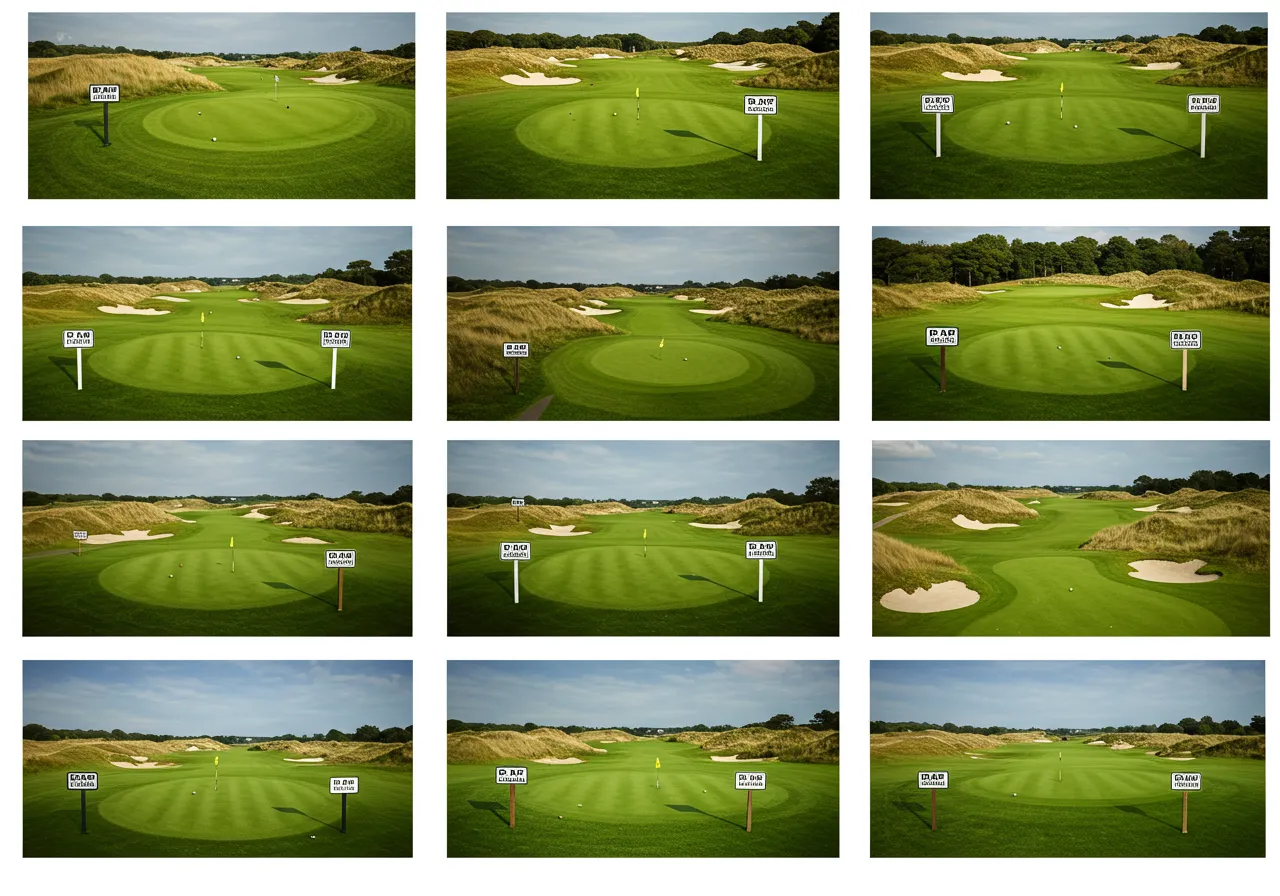
What Is the Standard Par for 18-Hole Golf Courses
When I walk onto a new golf course, I always check the scorecard first. Why? Because the total par tells me everything I need to know about the round ahead.
Most 18-hole golf courses are Par 72. That means if you play each hole like a skilled golfer, you should finish the course in 72 strokes. But not all courses are the same.
Some are Par 70, others are Par 71, or even Par 73, depending on how they’re designed.
Here’s how it usually breaks down:
Table: Common 18-Hole Par Distributions
| Total Par | Hole Breakdown | % of Courses |
| Par 72 | 4x Par 3s, 10x Par 4s, 4x Par 5s | ~60% |
| Par 71 | 4x Par 3s, 11x Par 4s, 3x Par 5s | ~20% |
| Par 70 | 3x Par 3s, 12x Par 4s, 3x Par 5s | ~15% |
| Par 73+ | Extra Par 5s or Par 3s added | Rare |
Source: NGF (National Golf Foundation)
As a pro, I prepare differently for each. A Par 70 course usually has more challenging Par 4s and fewer chances for birdies. A Par 73 might mean an extra-long Par 5, more room to score.
So don’t assume every course plays the same. Check the par before you tee off, it shapes your whole strategy.
Are All Golf Courses Par 72 (Myth-Busting the Standard)
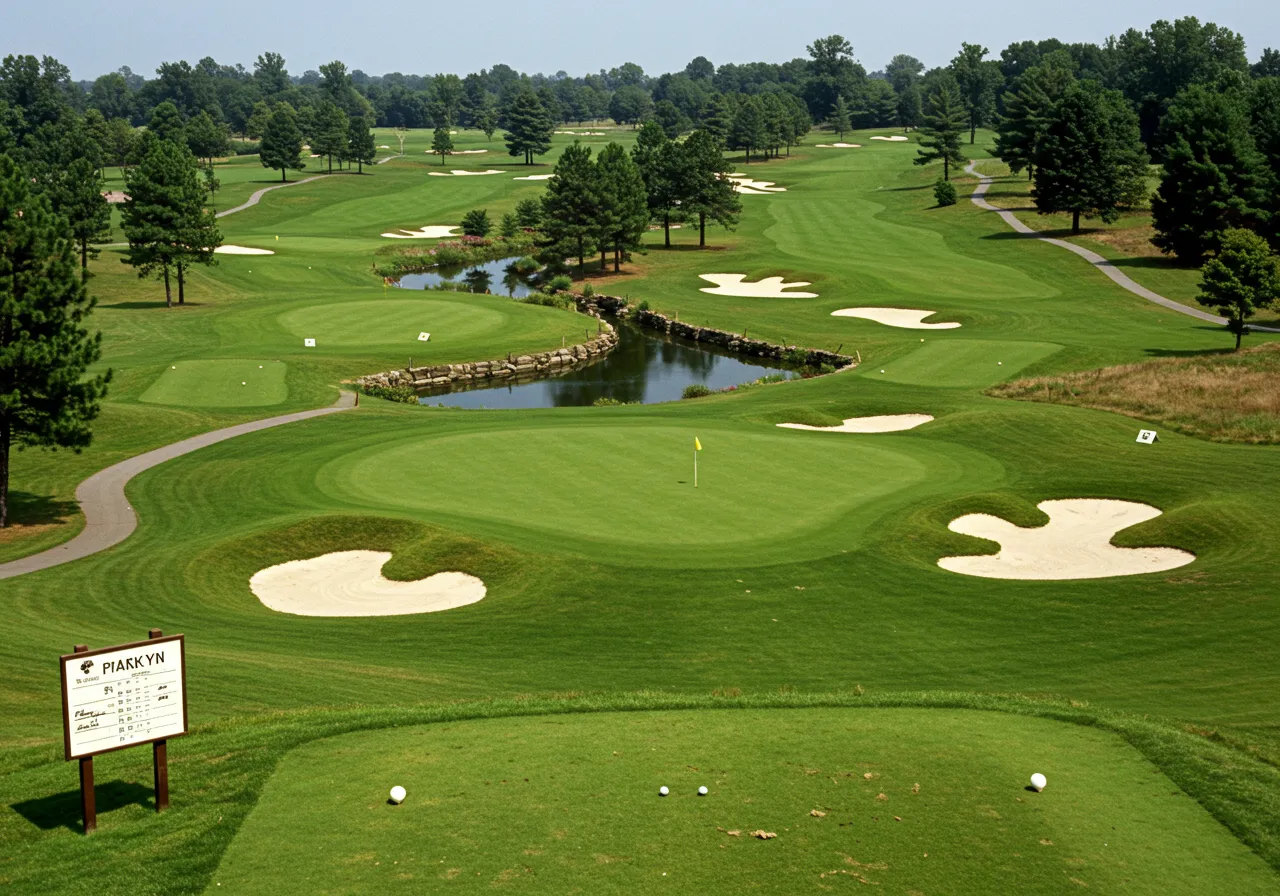
Many beginners think all courses are Par 72, but that’s not true at all.
For example:
- Augusta National is Par 72
- Pebble Beach is also Par 72
- But U.S. Open courses are often set to Par 70 to make them harder
When I played a Par 70 setup, I had to rethink everything, fewer birdie holes, tougher par 4s, and more pressure to stay steady.
So next time you play, remember: Par 72 is common, not guaranteed.
What Is the Par for a 9-Hole Golf Course
If you’re just getting started or don’t have time for 18 holes, you’ll probably play a 9-hole course.
Most 9-hole golf courses are Par 36, which is half of a Par 72. That usually means:
- 2 Par 3s
- 5 Par 4s
- 2 Par 5s
When I practice short rounds, I use these 9-hole games to focus on iron shots and putting. They’re great for beginners, and many even let you walk the course.
So yes, 9-hole courses still use par, and they help build the same skills as full rounds.
Par Scoring Terms Explained: Golf’s Simple Score Sheet
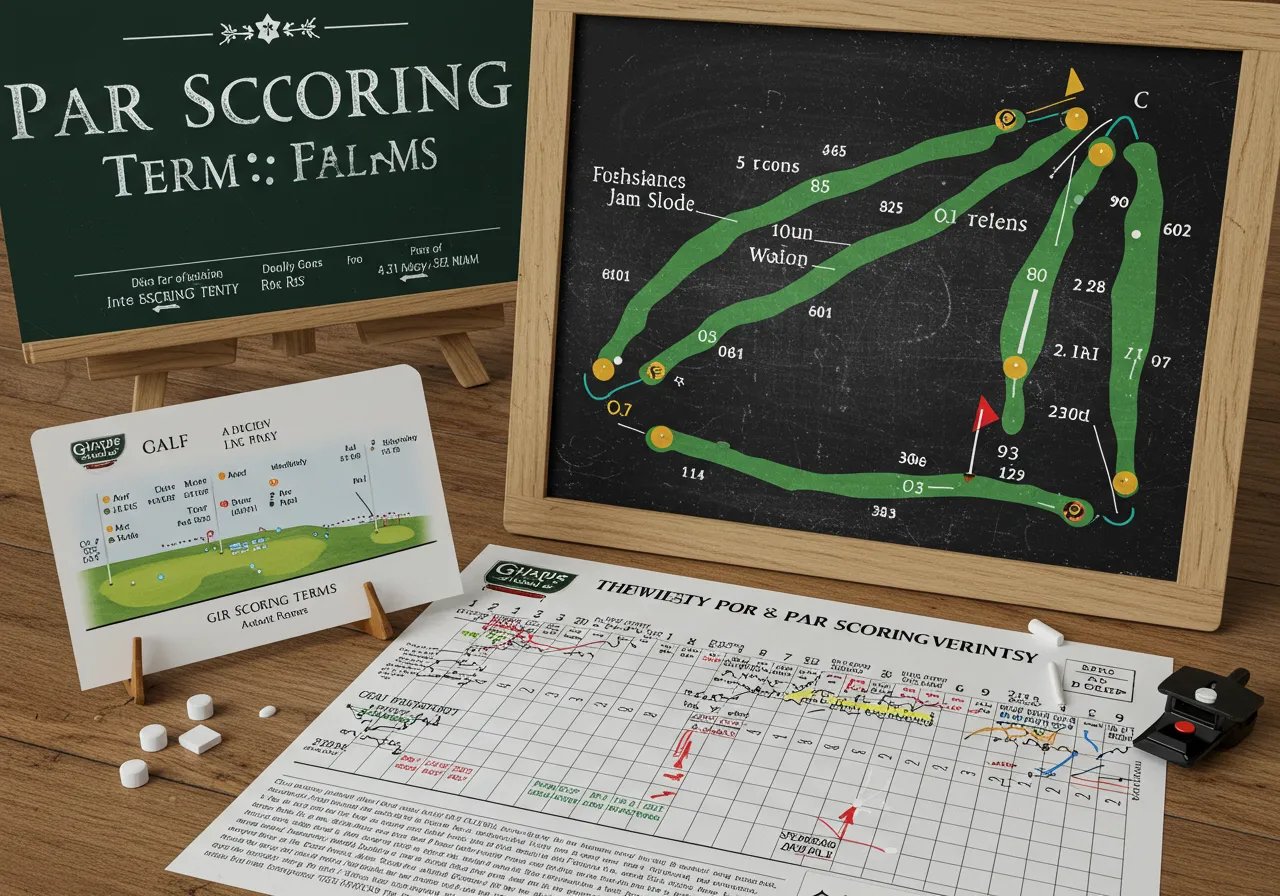
Golf Scoring Terms Cheat Sheet for Beginners
When I coach beginners, one of the first things they ask me is:
“What do all these names, like birdie and eagle actually mean?”
Let me make it simple. These terms tell you how many shots you took compared to par. And trust me, once you get them down, golf starts feeling way more fun.
Here’s the cheat sheet I give to every new player on the course:
Golf Scoring Terms Chart
| Score Term | What It Means | Example |
| Ace | Hole-in-one | 1 shot on a Par 3 |
| Birdie | 1 stroke under par | 3 shots on a Par 4 |
| Eagle | 2 strokes under par | 3 shots on a Par 5 |
| Albatross | 3 strokes under par (very rare) | 2 shots on a Par 5 |
| Condor | 4 strokes under par (theoretical) | Hole-in-one on a Par 5 |
| Par | Even with expected strokes | 4 shots on a Par 4 |
| Bogey | 1 stroke over par | 5 shots on a Par 4 |
| Double Bogey | 2 strokes over par | 6 shots on a Par 4 |
| Triple Bogey | 3 strokes over par | 7 shots on a Par 4 |
Note: This table gives a simple breakdown of common golf scoring terms and how they relate to par.
What Is 2 Under Par Called in Golf

When I score 2 under par on a hole, that’s called an eagle.
It usually happens on a Par 5 when you hit the green in 2 and sink a long putt. It doesn’t happen often, but when it does, it feels amazing.
What Is 4 Under Par Called
This one’s wild, 4 under par is called a Condor. It’s so rare that most pros have never seen it.
The only way to make one is to ace a Par 5, which means a hole-in-one on a super long hole. It’s happened only a few times in history!
What Is 1 Under Par Called
Birdie is the one we aim for on most holes. It means you scored one shot better than par. If the hole is a Par 4 and you make it in 3, that’s a birdie.
Get enough of these and your round looks great.
What Is 2 Over Par Called
Nobody likes to admit it, but yes, even pros get double bogeys. That’s 2 shots over par on a hole. It might happen if you hit into water or miss a couple of puts. I just try to bounce back on the next hole.
What Is a Hole-in-One Called in Golf
An ace is a hole-in-one, and yes, I’ve been lucky enough to get one. It’s usually on a Par 3, and it’s the kind of shot you never forget.
The crowd cheers, your hands shake, and it feels unreal.
Tip from a Pro
Golf scoring sounds tricky at first, but it’s just a fun way to track your performance. Once you know these terms, birdie, eagle, bogey, you can follow any golf match like a pro.
Par Variations & Rare Exceptions in Golf
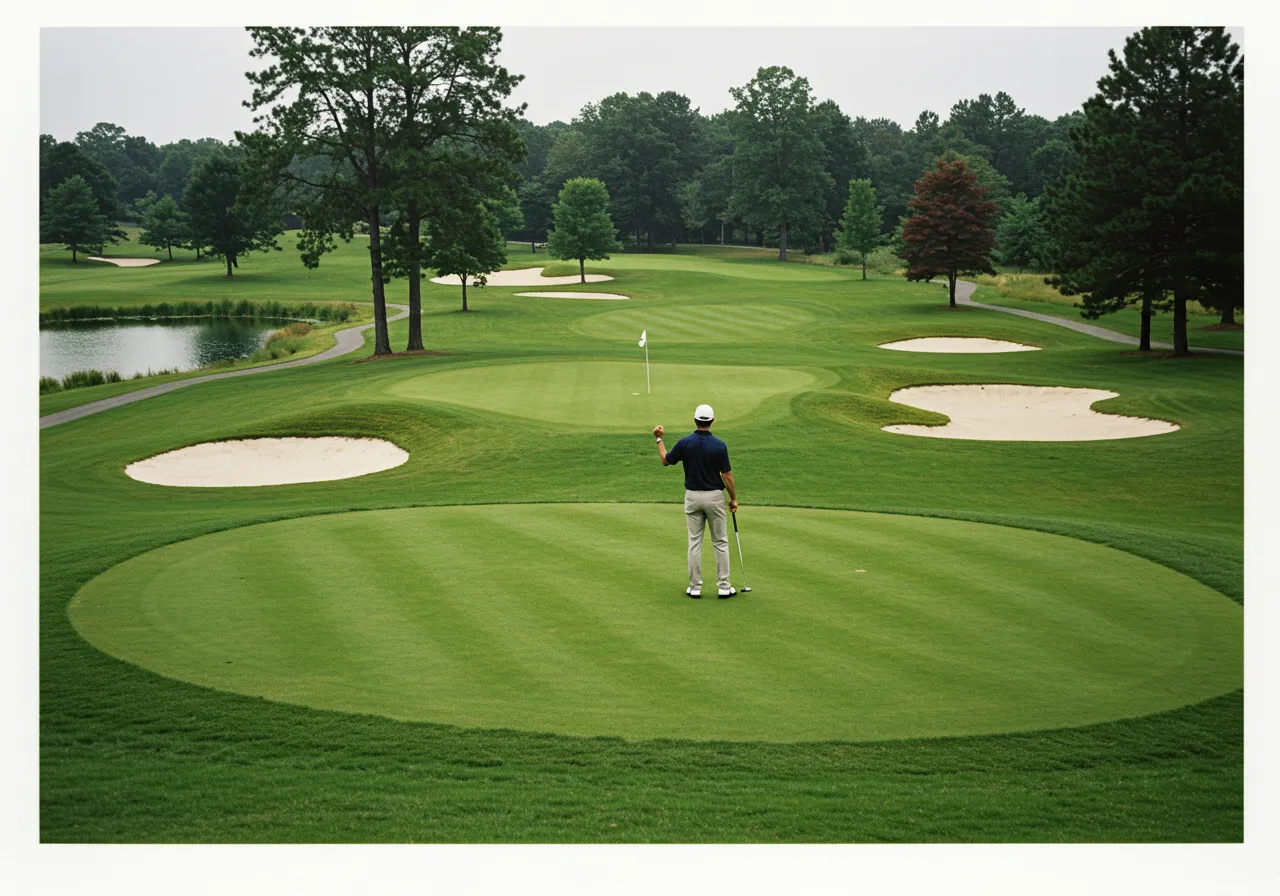
Do Par 6 or Par 7 Holes Exist on Golf Courses
Yes, par 6 holes exist, and I’ve played one myself. They’re extremely rare, but unforgettable!
One of the most famous examples is at Lake Chabot Golf Course in California. Hole 18 is a par 6 that stretches 783 yards.
It takes a solid drive, two big fairway shots, and maybe a wedge and two putts to finish it.
As a pro, I love these kinds of holes because they test your course management and patience. You can’t just blast it; you need a plan.
Some courses even experiment with par 7 holes, but those are almost mythical. You’d need over 800 yards for that!
So yes, Par 6 and Par 7 holes do exist, but they’re like bonus levels in the game of golf: rare, long, and exciting.
Why Are U.S. Open Golf Courses Usually Par 70
Here’s something most casual players don’t realize: U.S. Open courses are often set to Par 70 on purpose.
Normally, a course might be Par 72. But for the U.S. Open, the USGA makes it tougher by turning some Par 5 holes into long Par 4s.
That doesn’t change the length; it just changes expectations.
When I played a U.S. Open qualifier, the Par 4s were long and had fast greens.
You had to hit perfect shots and still fight to make par. It was mentally and physically tougher.
That’s the idea, Par 70 forces players to earn every stroke, which is why winning scores in the U.S. Open are often close to even-par.
What Is the Par Score at Augusta National Golf Club
Ah, Augusta National. One of my favorite places to play and watch.
The par at Augusta is 72, made up of:
- 4 Par 3s
- 13 Par 4s
- 4 Par 5s
What makes it special isn’t just the numbers, it’s the layout. Holes like Amen Corner (11, 12, and 13) challenge your nerve.
The Par 5s, like Hole 13 and 15, offer eagle chances, but only if you take smart risks.
When I played a practice round there, I realized Augusta punishes bad decisions but rewards bold, accurate play.
The course rating, elevation changes, lightning-fast greens, and fairway shaping all add to the par’s meaning.
So yes, it’s a Par 72, but it plays like something more if you don’t bring your best.
How Par Affects Golf Strategy and Player Goals
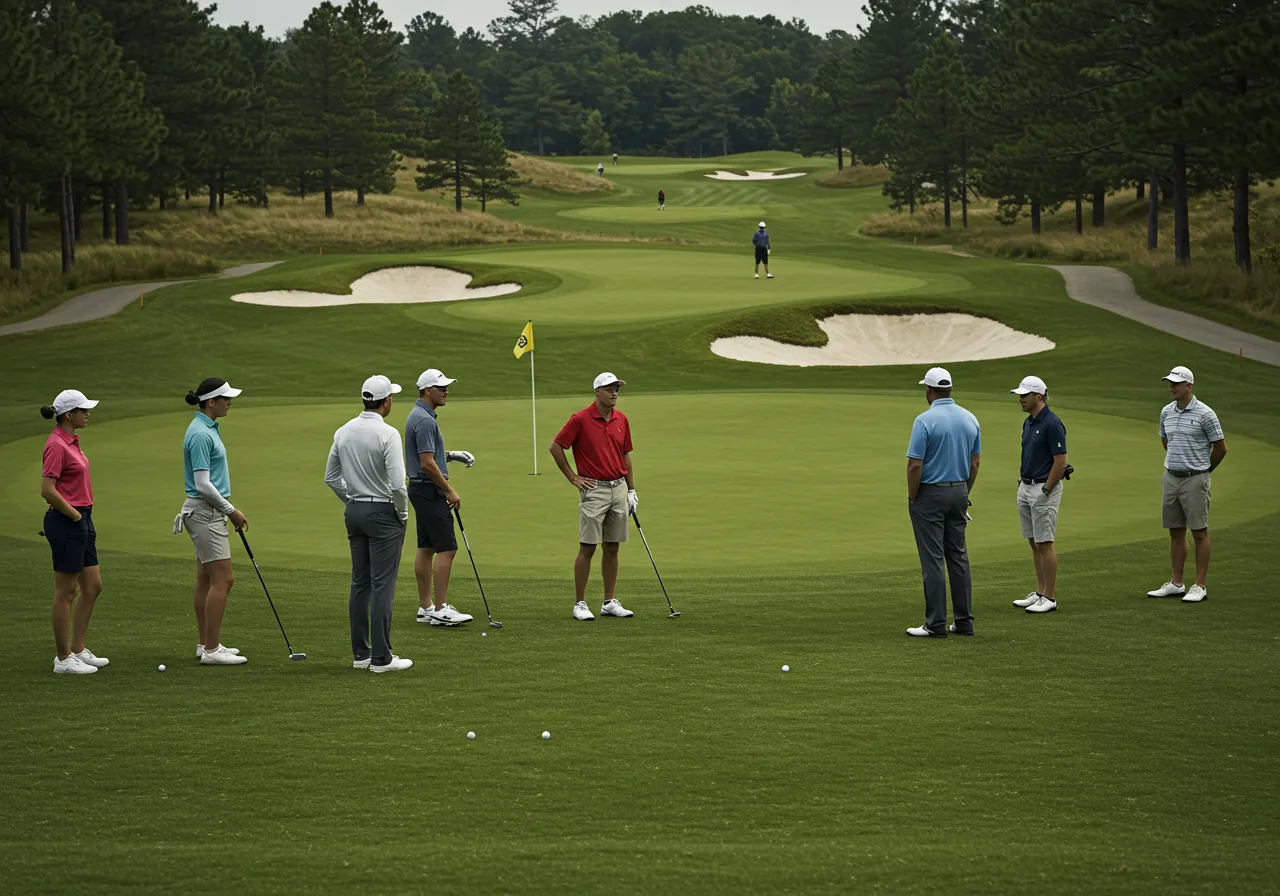
Does Par Change for Amateur Golfers Based on Handicap
One thing I always tell my students is this:
Par doesn’t always mean the same thing for everyone.
For professional players like me, par is the standard number of strokes we’re expected to take. But for amateur golfers, we use something called “net par” which adjusts for your handicap.
So what does that mean?
Let’s say a hole is a Par 4, but you have a high handicap. You might be allowed one extra shot on that hole. So for you, a score of 5 is still counted as “net par.”
This helps make golf fair and fun. It means:
- A beginner can play with a pro
- You both have realistic scoring goals
- Everyone gets a chance to win a match
When I play friendly games with amateurs, we use handicaps all the time. It’s not about lowering the challenge; it’s about making it competitive and enjoyable for all skill levels.
Why Breaking Par (or 50, 70, or 100) Is a Big Deal in Golf
Every golfer has milestones, goals that show you’re improving.
- Breaking 100 means you’re learning the basics
- Breaking 90 shows you’re becoming consistent
- Breaking 80 means you’re getting really good
- Breaking par (scoring under 72) puts you in pro territory
When I first broke 80, I felt on top of the world. But breaking 100 or even 50 on 9 holes is just as special when you’re starting out.
These goals keep you motivated and help you measure your progress.
And here’s the thing: the course doesn’t change, you do.
Your swing gets better, your decisions get smarter, and soon, that Par 4 you used to fear? You birdie it.
So, if you’re chasing par or just trying to play a full round, remember: par is the guide, but progress is the goal.
Table: How Par and Score Goals Change by Golf Skill Level
| Player Type | Common Goal | Par Strategy | Typical Milestone |
| Beginner (High Handicap) | Break 100 (on 18 holes) | Use the net par based on handicap | Score ≤ 99 |
| Casual Amateur | Break 90 | Focus on bogey golf (1 over par per hole) | Score ≤ 89 |
| Skilled Amateur | Break 80 | Aim for pars, sneak in birdies | Score ≤ 79 |
| Competitive Golfer | Break Par | Full course strategy, avoid bogeys | Score ≤ 71 |
| 9-Hole Beginner | Break 50 (on 9 holes) | Practice short game, use net par | Score ≤ 49 |
Note: This table shows how different golfers set score goals based on their skill level and handicap.
Key Components of a Golf Course (And How They Affect Par)

What Are the 5 Main Parts of a Golf Course and What Do They Do
When I walk up to the first tee, I don’t just see a hole; I see a full puzzle.
Every golf course is made of 5 main parts, and each one changes how hard the hole plays. These parts are the reason some holes are Par 3s and others are Par 5s.
Let me walk you through them like I’d coach a junior golfer:
Table Of 5 Key Parts of a Golf Course and Their Role
| Part of the Course | What It Is | How It Affects Par |
| Tee Box | Where do you start the hole | Longer tee = longer hole = possibly higher par |
| Fairway | Short-cut grass leading to the green | Wider fairways make holes easier to play |
| Rough | Longer grass beside the fairway | Harder to hit from, increases difficulty |
| Hazards | Sand traps (bunkers) and water areas | Force careful planning, raise hole complexity |
| Green | Smooth area where the hole and flag are | Fast or sloped greens make putting much harder |
When I play a Par 5, it usually has a long fairway, a water hazard, and a tight green. That’s why it’s not a Par 4, the challenge is bigger.
So, these parts aren’t just there to look pretty, they shape how par is set and how you build your strategy.
What Is the Sand Part of a Golf Course Called

Ah, yes, the sand trap. Or, if you want the proper term: a bunker.
I’ve hit into more bunkers than I care to admit, but I’ve also learned how to escape them. Bunkers are tricky because:
- You can’t ground your club before hitting
- The ball sinks into the soft sand
- You need a special swing to lift it out
Bunkers make short holes harder, especially near the green. That’s why designers place them there, to test your accuracy.
So next time someone asks, “What’s that sand part called?”, you tell them: It’s a bunker, and it’s there to mess with your scorecard.
FAQs
What is the standard par for a golf course?
The standard par for a full 18-hole golf course is usually 72 strokes. It’s made up of a mix of Par 3s, Par 4s, and Par 5s, based on the length and design of each hole.
Are all golf courses par 72?
No. While Par 72 is the most common, some courses are Par 70, Par 71, or even Par 73, depending on the number of short or long holes. Tournament setups like the U.S. Open often use Par 70 to make it more challenging.
What does par mean in golf?
Par means the expected number of strokes a good golfer should take to finish a hole or a course. It’s a score benchmark used to measure performance on every hole.
What is a birdie in golf?
A birdie is when a golfer scores 1 stroke under par on a hole. For example, scoring 3 on a Par 4. It shows you played that hole better than expected.
What is 2 under par called?
Scoring 2 under par on a hole is called an eagle. It’s most common on Par 5 holes when a player reaches the green in 2 shots and sinks the putt.
What is 4 under par called?
4 under par is called a condor, which is extremely rare. It usually means a hole-in-one on a Par 5, something only a few players have ever done.
What is the par for 9 holes?
Most 9-hole golf courses have a total par of 36, which is half of a full 18-hole Par 72 layout. It usually includes a mix of Par 3s, Par 4s, and Par 5s.
How is par calculated for a golf hole?
Par is based on the hole’s length, with adjustments for hazards, elevation, and green difficulty. The USGA provides guidelines for course designers to set fair and consistent pars.
Conclusion
After years of playing around the world, from local muni courses to PGA-level layouts, I’ve realized one thing: par is the one number that connects every golfer.
Most full courses are Par 72, but that number changes with design, hazards, and strategy.
Some tough courses drop to Par 70. Others, like Augusta National, stick with 72, but challenge you in every way.
Scoring terms like birdie, eagle, bogey, and even hole-in-one all depend on par. Without it, we wouldn’t know if we’re playing well or need to improve.
So, if you ask me what golf is really about, I’ll say this:
“Par is the language of golf. It tells you where you are, and where you want to go.”